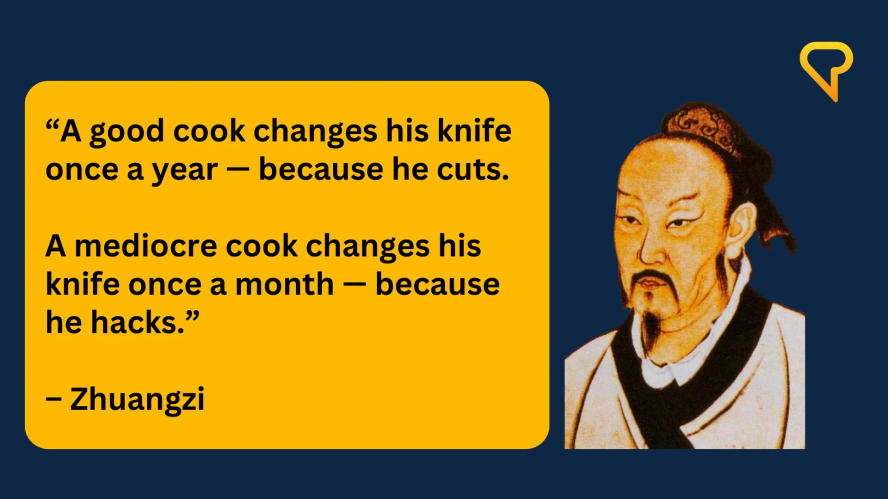Everywhere you look, people are selling the dream of instant progress in a new language. There are plenty of videos out there claiming that fluency can be achieved in three to six months. However, is this the type of goal that we should have as language learners? We all know these claims are misleading. In light of all this, I can’t help but ask, what’s the rush?
Learning a language requires the proper mindset. It takes time. And the key to long-term success is to embrace the process—slowly.
The Power of Noticing
During our day-to-day lives, we pass places quickly. We’re always in a rush, and we seldom take the time to notice our surroundings. However, what happens if you slow down the pace? Take in the details. Enjoy the atmosphere. You’ll be surprised by how much more you notice and appreciate.
This sentiment also applies to language learning. Scrambling to drill vocabulary or achieve fluency within a few months prevents us from engaging with the language more deeply and maximizing the benefit of our time with the language. If you slow down, you’ll start to notice patterns, phrases, and structures more frequently and consistently.
Impatience Is the Enemy of Progress
I recently showed LingQ to my cousin in Sweden. The moment he saw an unfamiliar word, he panicked. “How do I remember this? How will I use it?” My answer: “Relax. Don’t force it. Just let the language come to you.”
When we stress about memorization or force ourselves to recall words immediately, we actually make it harder to learn. Instead, take it easy. Read. Listen. Let your brain absorb the language naturally.
To understand more on the role of our mindset in language learning, check out my take on Carol Dweck’s book Mindset.
It may seem counterintuitive, but the less pressed you are to memorize every new bit of information, the more effectively you’ll internalize and retain what you’re reading or listening to. Urgency and stress can inhibit your ability to learn. With the proper mindset, language learning should be a pleasant, enjoyable process.
The Art of Slow, Repetitive Learning
Slow learning doesn’t mean doing nothing or holding yourself back. It means engaging with the language in a way that feels natural and enjoyable. Listening to the same content repeatedly, reading stories, and exposing yourself to the language in meaningful ways all help. Think of it like Zhuangzi’s butcher, who perfected his craft through repetition—not by memorizing rules, but by feeling the process.

Your goal as a language learner is to develop a sense of intuition. You do not need to hack away at the language, but immerse yourself in it consistently and intentionally enough to develop a feel for its patterns and sounds. Ultimately, you want to use the language spontaneously and with ease. This is not done through sheer force or rushed memorization.
Why Schools Get It Wrong
This might upset some people, but the traditional school system puts too much pressure on fast results. Tests, grades, and forced memorization create anxiety rather than fluency. Real learning happens when we immerse ourselves in a language over a long period of time, not when we cram for an exam.
The pressure to achieve something in a hurry, in fact, prevents us from gradually assimilating the language. Slow, gradual listening and reading allows us to build up our knowledge and feel for the language. There is not a shortcut for this process.
Final Thoughts: Trust the Process
Language learning is about layering. Each time you listen, read, or engage, you’re adding another thin layer of familiarity. You may not see immediate results, but over time, these layers build into fluency. One day, words and phrases will just start coming out naturally.
So, embrace slow language learning mindset. Enjoy the process. Trust that it will all come together.









comments on “Language Learning Mindset: Take Your Time”